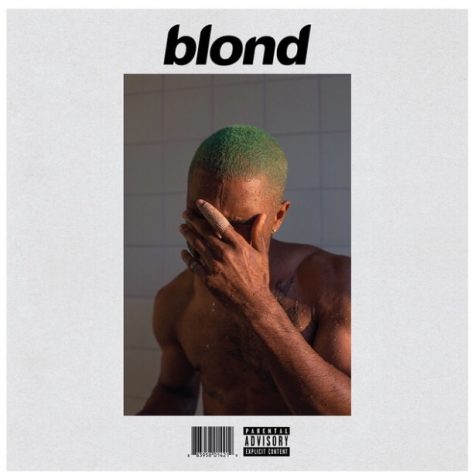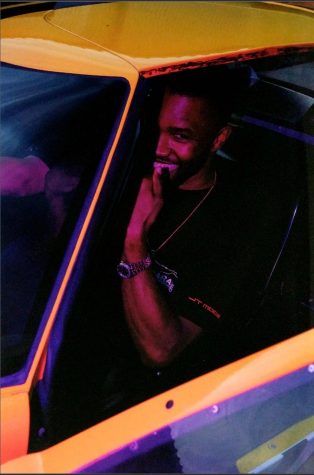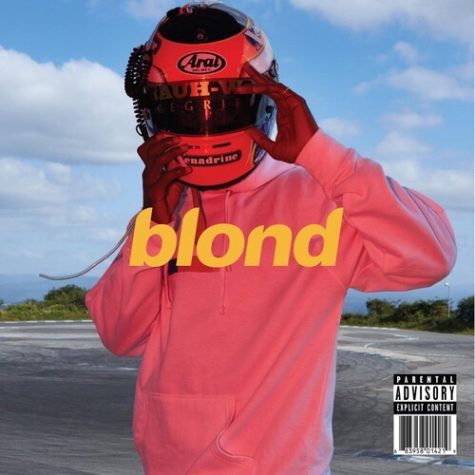Why “Blonde” Will Forever Live On
Oct 9, 2018

What is so compelling about this photo is that it directly opposes the title of the magazine. Ocean, an independent man, is pictured crying, vulnerable. In attempt to hide his feelings, Ocean covers his face with his hand, to stay in line with gender norms. This visual perspective “Blonde” gives it’s audience before they even press play challenges societal rules and playfully nods to the indepence Ocean has.
“Blonde”, Frank Ocean’s sophomore album from 2016, was and always will be an instant classic. Following his smooth, rich R&B debut album, “Channel Orange”, “Blonde” addresses Ocean’s bisexuality, emotional vulnerability and the struggle of growing into an independent man. The bleached rhythms and feminine auto-tunes instilled in Ocean’s songs pull listeners into the depths of his mind and into his dreams.
Before delving into the breadth of this album, the album itself is not the solo reason for being a classic. Ocean challenged modern streaming culture by first releasing two creative mediums closely related to “Blonde”; one being a visual album titled “Endless”, 45 ethereal minutes full of haunting melodies and a never-ending staircase in which Ocean ascended. Ocean also teased the world with a 360 page magazine titled “Boys Don’t Cry,” in collaboration with Kanye West, A$AP Rocky and Tyler the Creator before releasing “Blonde”. The magazine was a hardback advertisement for the album, including several photos of cars (a staple in Ocean’s creative work/life), as well as one picture that stood out from the rest. A portrait of Ocean, melancholic and shirtless, with his left hand covering his face. This photo would later be the cover art for “Blonde”.
Within the hour of the album, Ocean confronts the desire for materialistic items in America such as “Nikes”, the title for Frank’s opening song. Ocean croons over the heartbreak of first love in “Ivy,” and describes just how love feels in “Pink + White.” He uses motherly words to murmur the dangers of youth drug abuse and the effect it has on personal drive in “Be Yourself,” yet counteracts those ideas with “Solo,” in which those nightmares become true. “Blonde” essentially blurs 17 songs into one mystical album, hypnotizing listeners with lush chord progressions and light productions and entrancing listeners into a relaxed state of mind.

Frank Ocean posing in just one of his many cars, featured in Boys Don’t Cry. Portraits of Ocean are hard to come by already, but to see a portrait of him smiling is quite a sight to be seen.
Yet before the hour was up, Ocean distorted listeners as the end of the album approached. The last few tracks were filled with electronic, melancholy and minimalistic chord progressions. The lyricism takes an incohesive turn, down a dark path regarding personal identity. This struggle for identity for Ocean hits the turning point on the 30 minute mark, in a track titled “Nights.” The song started off with an aggressive electric guitar where Ocean repeatedly hummed the effect his youth nights had on him. He recalls these moments seconds before the midway transgression into chaos begins, repeating, “My everyday s**t, every night s**t, my every day s**t, Every night s**t…,” until an electric riff screams toward a crashing end. The song turns to a blissful three piano chord melody which plays out until the song ends. What started as a distorted, incoherent, and maddening track, turned into a blissful and ecstatic music piece. This could have possibly represented Ocean’s life and foreseeable future; from the humble starts of growing up in New Orleans, frustrated and alone, to a career where he was able to voice his former frustrations and loneliness for profit.
After “Nights,” the rest of the album plays out with honest, truthful bars from Andre 3000 on “Solo (Reprise),” falling out of dreams from “Pretty Sweet,” and a slow goodbye to a lover and a past life, the final song “Futura Free” echoing, “I used to work on my feet for seven dollars a hour/Call my momma like momma/I ain’t making minimum wage momma…” Ocean recalls the struggles of his past life and the struggle to make two ends meet; both figuratively, regarding his sexuality, and literally, regarding his economic situation.

The albums alternate cover photo, spelled without an ‘e’, representing the masculine version of the word. Frank Ocean is pictured wearing a motorcycle helmet, featured many times throughout the Boys Don’t Cry magazine.
“Blonde” was a soliloquy to bid Ocean’s past life goodbye. He bleached his memories platinum, and colored them in with jarring yet soft, honest yet dreamy, musical pieces. The advertisements regarding “Blonde” were contemporary enough; taking a road less traveled by first publishing a magazine to anticipate fans rather than slowly teasing them with the occasional single drop. “Blonde” tells a story of a boy turned to man, a modern man full of emotions and vulnerabilities. “Blonde” was a love letter to past relationships, a comfort to the LGBT community, and most importantly, “Blonde” was a raw look inside Ocean’s mind, followed closely through own personal anecdotes and dreams.
Ocean’s “Blonde” will forever live on as an instant classic not because it had ‘sick’ beats or ‘hard’ verses, but because it was heartbreakingly raw and emotionally present. It was not ghost written, and the lovers Ocean’s sings of are unknown to listeners worldwide. The lyrics you hear are undoubtedly the lyrics Ocean lived through. “Blonde” was not a flex on identity in the form of money and fame but rather a tilt on identity in the form of personality and dynamic moments that made Ocean himself. It’s been two years since the album initially released, and though Ocean doesn’t have the wide fanbase of the most prevalent pop singer, Ocean has the stamina to remain an intriguing, multi layered vocalist/writer for many years to come.






Jeff Dunham ◊ Oct 9, 2018 at 2:11 pm
2016 album review in 2018